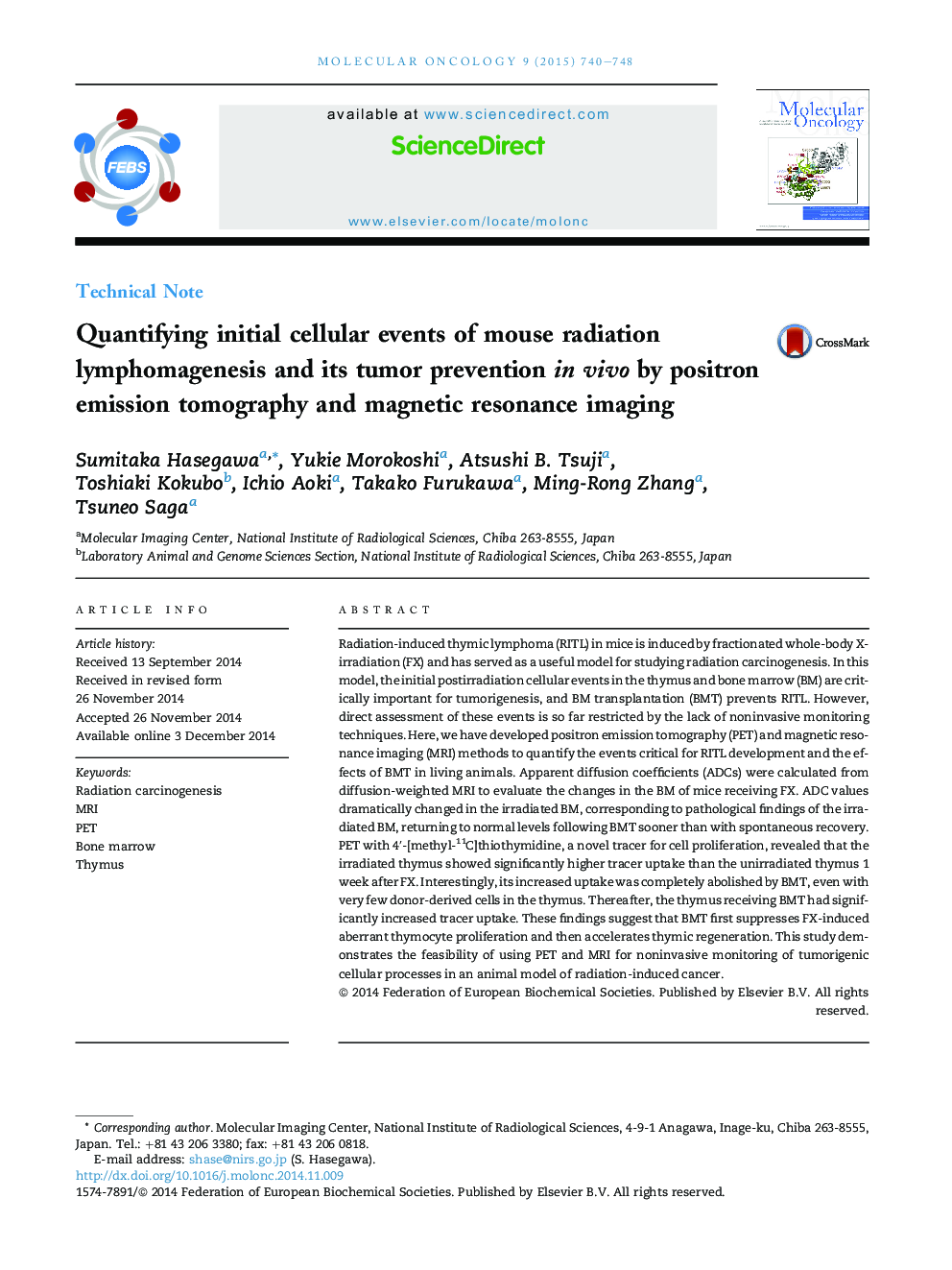| Article ID | Journal | Published Year | Pages | File Type |
|---|---|---|---|---|
| 10914789 | Molecular Oncology | 2015 | 9 Pages |
Abstract
Radiation-induced thymic lymphoma (RITL) in mice is induced by fractionated whole-body X-irradiation (FX) and has served as a useful model for studying radiation carcinogenesis. In this model, the initial postirradiation cellular events in the thymus and bone marrow (BM) are critically important for tumorigenesis, and BM transplantation (BMT) prevents RITL. However, direct assessment of these events is so far restricted by the lack of noninvasive monitoring techniques. Here, we have developed positron emission tomography (PET) and magnetic resonance imaging (MRI) methods to quantify the events critical for RITL development and the effects of BMT in living animals. Apparent diffusion coefficients (ADCs) were calculated from diffusion-weighted MRI to evaluate the changes in the BM of mice receiving FX. ADC values dramatically changed in the irradiated BM, corresponding to pathological findings of the irradiated BM, returning to normal levels following BMT sooner than with spontaneous recovery. PET with 4ʹ-[methyl-11C]thiothymidine, a novel tracer for cell proliferation, revealed that the irradiated thymus showed significantly higher tracer uptake than the unirradiated thymus 1 week after FX. Interestingly, its increased uptake was completely abolished by BMT, even with very few donor-derived cells in the thymus. Thereafter, the thymus receiving BMT had significantly increased tracer uptake. These findings suggest that BMT first suppresses FX-induced aberrant thymocyte proliferation and then accelerates thymic regeneration. This study demonstrates the feasibility of using PET and MRI for noninvasive monitoring of tumorigenic cellular processes in an animal model of radiation-induced cancer.
Related Topics
Life Sciences
Biochemistry, Genetics and Molecular Biology
Cancer Research
Authors
Sumitaka Hasegawa, Yukie Morokoshi, Atsushi B. Tsuji, Toshiaki Kokubo, Ichio Aoki, Takako Furukawa, Ming-Rong Zhang, Tsuneo Saga,
